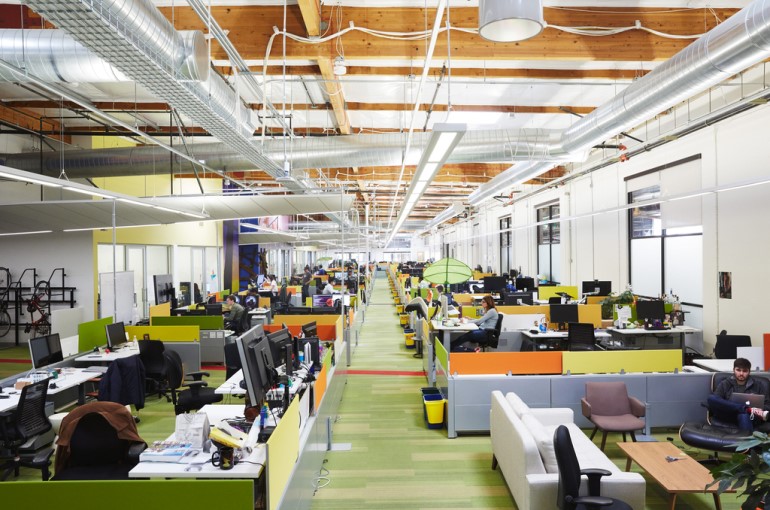The Big Bang of The Pandemic-Related Work Policies of High-Tech Companies
With around 62 percent of employed Americans working from home due to the emerging wave of COVID-19 pandemic. For the few months, employed Americans worked at home, done countless Zoom calls, and have tried to maintain composure in the face of uncertainty, ambiguity and volatility.
Tech Giants Embrace Work-From-Home Regimes for The Reminder of 2020
It turns out many people can work from home permanently. The majority of employed Americans who have been working from home would prefer to continue a work-from-home policy for convenience, safety and long-commute avoidance. According to Gallup, nearly 60 percent of Americans workers prefer to work remotely as much as possible, even when public health restrictions are
Whilst states begin to allow businesses across the U.S to reopen and force employees who still have jobs to risk their health to work again, America’s high-end big tech companies is assuring employees they can work from home until the coronavirus clears up.
Silicon Valley and Seattle giants – Facebook, Microsoft, Amazon, and Twitter – were the first to send their employees home as the virus spread to the U.S. Now they are among the last to return them to the office. Some of their employees might never go back to the workstations.
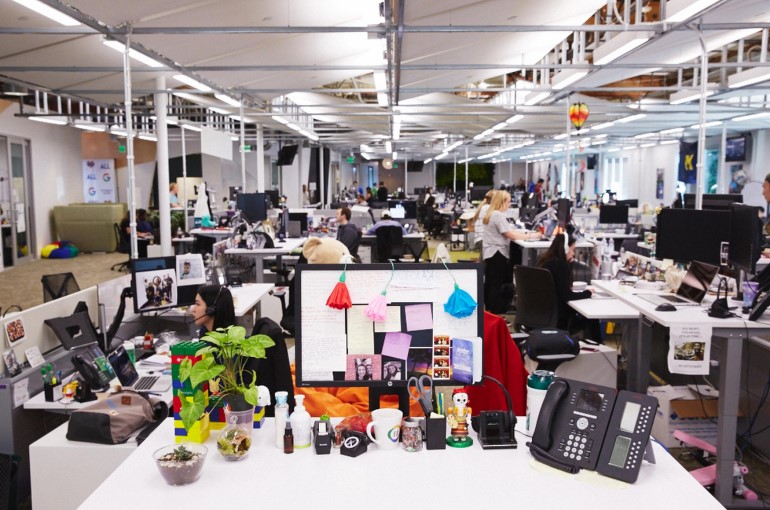
The companies are figuring out what their highly paid, highly valued employees want, using their own technology to make remote work easier and looking to hire new workers outside of big city hubs. It is a potentially huge turnaround after years in which companies like Amazon and Google chased scarce tech talent by opening or expanding offices in hip urban locations such as San Francisco and New York.
Such a shift might also amount to a repudiation of the notion that creative work demands corporate campuses reminiscent of college, with free food, ping pong tables and open office plans designed to encourage unplanned interactions.
The result could re-imagine not just Silicon Valley but other cities as the companies expand hiring in places like Atlanta, Dallas and Denver, where Facebook plans to open new hubs for its new, mostly remote hires
As first reported by The Information, CEO Sundar Pichai said during a virtual all-hands meeting that Google employees likely will be extended remote working limit from June 1 to December 31. Employees who need to return to their office can start as early as June or July, while the majority of employees can continue to work from home for the remainder of the year. Any employees who return to a Google office may encounter new safety measures in place and office experience. Google employees began remote work starting in March. Google is not the only technology company that extended its work from home policy.
#1. Twitter Will Implement Work-From-Home Policy Indefinitely
Twitter went even further, announcing that except those required to be present in an office, some of its workforce is allowed to work from home on a permanent basis even after COVID-19, a plan CEO Jack Dorsey hatched before the coronavirus. His other company, Square, which like Twitter is based in San Francisco, is doing the same. Some new U.S.-based job listings for Twitter give the option for hires to work in cities like San Francisco, New York and Washington D.C. but also remotely full time anywhere in the country.

Twitter does not expect to reopen most of its offices or approve business travel until September. It has also canceled all internal events for the rest of the year and possibly into 2021.
“The past few months have proven we can make that work. So, if our employees are in a role and situation that enables them to work from home and they want to continue to do so forever, we will make that happen.” said by Jack Dorsey.
The move to a more distributed-led workforce had been in the works with Dorsey commenting on more than one occasion that he no longer wanted a workforce concentrated in San Francisco.
#2. Amazon Intends to Extend Remote Work Guidance by Several Months
Amazon, also headquartered in Seattle, offers corporate employees the option to work-from-home regime until at least October 2, the company announced in an emailed statement, whilst adding it applicable to do globally. Brushing out the timeline on a return to work for many employees, the move is seen as an outcome of the scrutiny the company is facing over conditions in its warehouses.
The announcement also articulated that the company is investing funds in safety measures for employees who wish to come to the office through physical distancing, deep cleaning, temperature checks, and the availability of face masks and hand sanitizer to maintain the labor force safety.
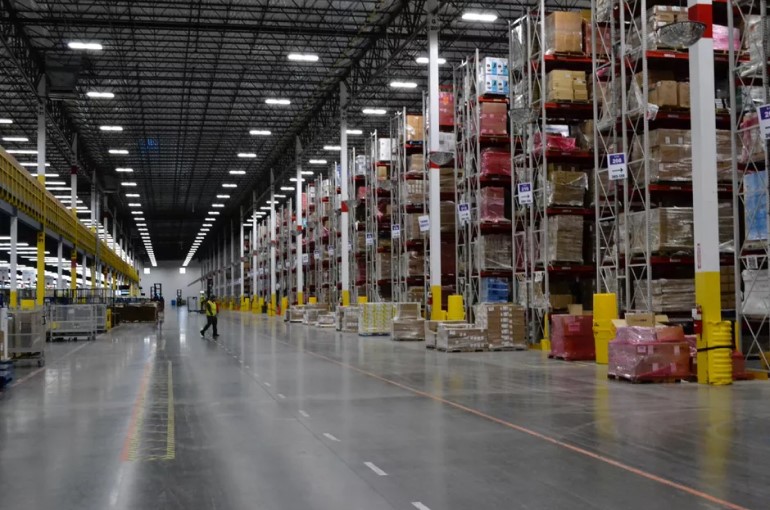
In contrast, workers at warehouses and other facilities are still required to come work on site despite the fact that multiple Amazon facilities have reported COVID-19 infections and deaths to keep deliveries flowing to customers stuck at home in government-mandated lockdowns.
#3. Facebook Starts Letting Employees Work from Home Permanently
In March, shortly after widespread shelter-in-place policies implemented in the U.S. and the repercussion coronavirus-hit economy, Facebook gave a $1,000 cash bonus to 45,000 full-time employees worldwide as a gesture to help them get through the crisis, even though very few of them were economically impacted by the virus outbreak.
Facebook, which has roughly 45,000 employees, is looking five to ten years down the line as it plans for more remote work, even when COVID-19 is no longer a threat that requires most of its employees to work from home. Since the coronavirus has upended work and office life, even companies with fewer resources and slower-moving cultures are likely to follow.
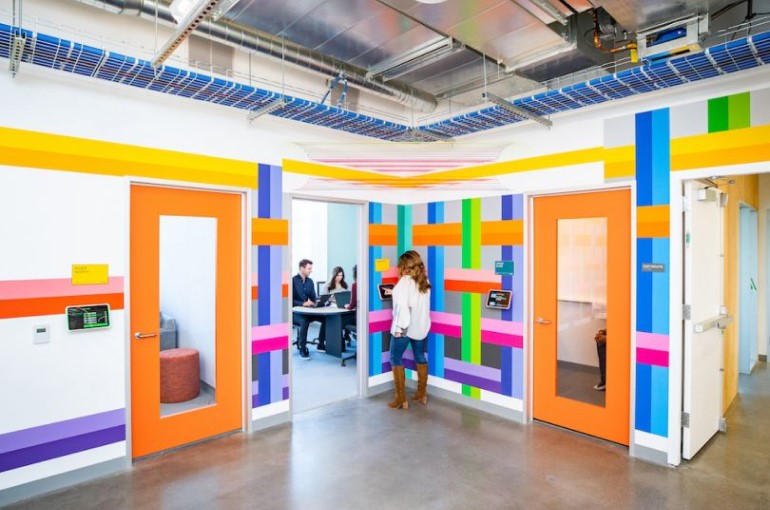
Mark Zuckerberg said a recent Facebook employee survey found that about 40 percent of employees would prefer to move to work from home, even after virus-related restrictions are lifted. Another 75 percent were rather interested, and the largest group wanted flexibility, with some remote and some in-office work. Eventually, Zuckerberg told employees that the company has updated its remote working policy to allow most of them to work from home for the remainder of 2020, although offices will reopen on July 6 after the Independence Day. And the company is opening remote hiring and expects to shift 50 percent of its workforce to remote work.
Facebook will localize employees’ compensation based on where each employee chooses to live. “There’ll be severe ramifications for people who are not honest about this,” said by Zuckerberg. Indeed, he confirmed the salary fluctuations – in most cases, expected reductions – via Facebook Live. Even though the salary adjustment might alter some people’s remote work decisions, presumably any adjustments are economically neutral and leave employees with the same amount of disposable income.
There are also some jobs – in Facebook’s case, the toughest content reviewing that deals with suicides, child abuse and other traumatizing material; sales; building, upgrading and maintaining data centers; lawyers who have to be in court and so on – that cannot be done remotely.

Newer employees, especially recent college graduates or those with little experience and lower performers might also fall into this group, Zuckerberg said. At Facebook, the CEO said employees will have to meet certain criteria to be considered for permanent remote work. This includes a level of seniority, strong performance and, naturally, being part of a team that supports remote work. Facebook employees, who will continue to work from home for an expected five to ten years, will receive cuts if they move to less expensive areas.
It is too early to know whether remote work options will mean an exodus of highly paid tech workers from San Francisco and Silicon Valley, where they have contributed to skyrocketing rents and housing prices. But Facebook’s employee survey suggests that at least some of its employees would leave the San Francisco Bay Area if given the option.
For companies that have built their empires on letting people communicate with far-flung friends and colleagues, moving toward remote work is not too hard of a sell. But there are many challenges. Collaboration, spontaneity, face-to-face interactions that are not on a scheduled call – all look different when people are working alone from their homes.
Long-Term Implications of Prolonged Work from Home on Tech Company Culture
For all the obvious conveniences, distance work has its profound implications. Elite tech companies run the risk of impeding organizations from creating and solidifying long-built company culture. Company culture is nurtured by employees coming together and engaging in team-building activities and division – or company-wide meetings – so having disjointed teams can make this hard to accomplish.
Undoubtedly, engagement is key in today’s workplace. It is believed that companies with high engagement have higher customer loyalty, productivity, and profitability than their peers. Companies with high employee turnover rates often suffer from poor employee engagement. In addition, organizations with an engaged workforce and a clear culture in place are more likely to attract top talent. When investing in long-term success, leadership teams cannot overlook the need to define company culture.
Work-from-home regime could impact the development and sustainability of company culture in many ways. Let take a brief view of notable downside of remote working program.
1. Disturbing the Relationship Between Colleagues in a Team
Work-from-home program is effective when everyone on the team already trusts one another and shares expectations. But as employees work mostly or exclusively from home, they likely only interact with their colleagues via email, and occasional calls via Zoom, WhatsApp. Remote working is not conducive to building meaningful relationships with co-workers in the same way that working in the office is.
This is important for two reasons to enlighten how work-from-home policy can impede the relationship between colleagues in a team.
Firstly, interacting daily with coworkers facilitates expectation-setting. As new workers are hired, it gets harder to develop relationships and create shared understandings. It is explained that as new employees are continuously exposed to the behavior of their colleagues, they are able to grasp the standards of performance and communication much more quickly than they would remotely. Eventually corporate groups will rely less on trust and corporate culture and more on sheer direct incentives and measurement of output. Again, parts of the tech corporate ethos will wither and disappear.
Secondly, social interaction is strongly correlated with workplace engagement and satisfaction. A Gallup study surveying more than 15 million employees indicated that those with a best work buddy are seven times as likely to be engaged in their jobs, are better at engaging customers, produce higher quality work, and have higher well-being, compared to those without.
2. Feeling of Isolation and Interaction-Related Mental Health Impacts
Though working from home can make life easier at first, it can be inimical to employees’ mental health. Humans are social creatures and working without seeing anyone can make employees feel cut off.
Work-from-home program can also trigger anxiety. A recent study concluded the lack of close contact hinders three key ingredients in any effective working relationship: The formation of trust, connection, and mutual purpose. Remote employees are more likely to struggle with office politics, worry colleagues are saying bad things behind their backs and lobby against them.
3. Challenging for Employees On-Boarding
As Twitter, Facebook and other tech companies shift toward everyone working from home, it will mean less reliance on team spirit and morale to ensure performance, and more management using direct financial incentives and project- and output-based monitoring. Virtual tools can help organize teams, but they simply cannot replicate the intellectual frisson of gathering the people in a team together, and this could damage performance and innovation. As performance weakens, wages will fall, if only slightly, which will lead to a further reduction in performance and worker quality.
There is some evidence that when employees work at a distance, they do not put in extra hours or extend themselves for the benefit of co-workers. Unless employees are 100 percent intrinsically motivated, it is challenging to stimulate enthusiasm about company’s service or product without ample social engagement – esprit de corps is tough to express digitally. That probably means a better work-life balance for many people, but perhaps also inferior performance from a lot of companies over the longer haul.
This move away from workplace morale as a motivator will help self-starter employees, but it may not be good for tech labor overall. In essence, without a local workplace ethos, it is easier to commoditize labor, view workers as interchangeable and fire people. The distinction between protected full-time employees and outsourced, freelance and contract workers weakens.
As the remote working trend becomes the norm for tech, Silicon Valley might end up losing a lot of what has made it special. And tech labor could end up increasingly commoditized and underpaid.
When tech companies grow, they have to employ more than just programmers and tech geniuses. They need lawyers, communications people, facilities people and many more ordinary workers, including in sales and, government relations. This is an ordinary development, unfortunately, it means the original culture becomes less about glorifying tech smarts. Moreover, performance in these other roles often has more to do with interpersonal skills and less to do with the sheer programming and tech savvy so prominent in many of the founders, again leading to a shift in corporate priorities. Even if these companies do not end up run by lawyers, over time they will still lose much of their distinctive flair.
The sudden move to distanced work has greatly sped up this process. So even as tech companies grow more essential, the geographic distribution of company activity will also make them less unique. They will start to resemble a typical cross-section of the workforce, with all of the routines and bureaucracy that most other companies experience. They will have less fire in the belly to disrupt and overturn previous institutions.
The Six-Feet Office is Designed for Workplaces for The New Normal
When these tech campuses do open back up, employees will likely find them looking very different from the way they remember. An important part of realizing new normal as a society will be the process of transitioning a workforce back to the workstation safely. Indeed, these offices will look quite different from those employees all left behind in March.
Commercial real estate firm Cushman & Wakefield has developed guidelines for companies across the globe planning a return to their offices as restrictions lifted, based on learnings from helping 10,000 organizations in China move nearly one million people back to office spaces . Using learnings gathered in China, along with World Health Organization data, medical advisors, and government officials, the firm developed a new concept inside its own Amsterdam headquarters called the Six Feet Office.
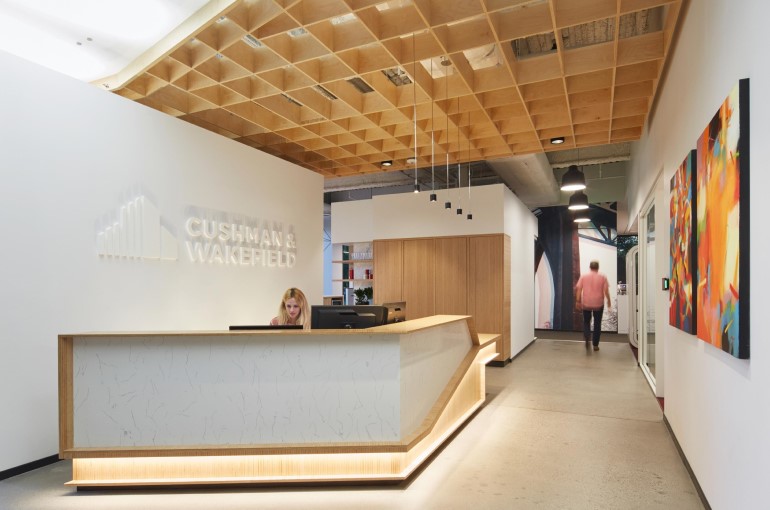
This concept – including the use of large circles and other visual cues on the floors – helps ensure a separation of six feet between employees. The firm has a task force working to prepare landlords and tenants for post-COVID-19 recovery. It is both a working laboratory and a showroom for the firm’s clients meant to garner attention to how people might safely go back to work in offices.
Bruce Mosler – Chairman of Global Brokerage, Cushman & Wakefield said that the six-foot rule in terms of social distancing is really all that employers need in face of exposure and unsafety.
The core premise is to ensure that six feet, the recommended measurement for safe social distancing. This behavior is encouraged through properly spaced desks, but also visual signals, such as a circle embedded in the carpeting around each desk to ensure people do not get too close.
In the future, according to experts, traffic flows in office spaces will be redesigned to go in one direction to reduce touch points – those crossover points where people may collide. To do it, Cushman & Wakefield have used arrows on the floor, employees are also encouraged to walk clockwise, and only clockwise, in lanes around the office. This one-way traffic is the same approach that healthcare workers take in hospitals to help avoid the spread of pathogens.
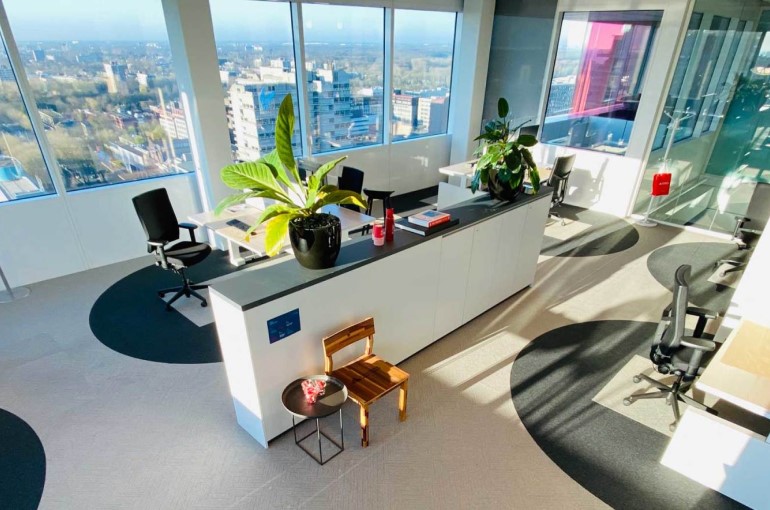
Each morning, employees are also asked to grab a paper placemat for their desk. At the end of the day, the paper is thrown away, which could help mitigate some contact-based spread of COVID-19 on office surfaces.
Additionally, they recommend that shared kitchens would be executed in new ways in the offices, with prepackaged, single item snacks available instead of shared snacks. They are also reducing touchpoints on anything previously shared, such as copiers, printers, coffee pots, supplies, and elevator buttons, as well as limiting the number of employees in elevators and conference rooms.
Cushman & Wakefield is even installing beacons into its office, which track the movements of employees throughout the space via their phones. Those beacons will be a way for the company to audit the efficacy of its own design and they may be used to audibly alert people when they break the invisible six-foot barrier.
On the other hand, the team at Cushman & Wakefield believes COVID-19 has fast-forwarded the future of work by as much as a decade, as telecommuting and Zoom meetings in the background became a standard practice overnight. And now, the virus looks poised to bring to light the oft-ignored dangers of recirculated office air. As employees prove their competence working remotely, they will only grow less tolerant of workplaces that fail to promote health and wellbeing.
Social Distancing Technologies to Protect Workers from The Exposure of Coronavirus
Several high-tech solutions may also help tech companies get back to work.
Companies are looking into whether additional technologies can be used to encourage or ensure social distancing in workplaces. Possibilities include lidar systems, security cameras coupled with artificial-intelligence software, or wireless dongles that workers wear around their necks.
Big tech company like Amazon that is already using thermal cameras to take the temperature of its warehouse employees. The company also has a prototype UV-light robot, which could be used to disinfect Amazon’s warehouses and Whole Foods stores.
Here are some high-tech solutions are utilized to keep employees bounce back to workplace safe.
Tech 1. StrongArm Technologies
A Brooklyn-based StrongArm Technologies company has been ensuring safe workplaces since it is launched, and it was able to turn around its technology and create a device that they believe will help companies even post-pandemic.
Company created a wearable device and platform called Fuse that was initially intended to help warehouse workers stave off injuries from repetitive tasks like lifting boxes. However, in the wake of the COVID-19 pandemic, the company has now reconfigured the gadget to keep workers safe amid Covid-19.
“The Fuse is able to encourage social distancing using its sensors that communicate with each other. As any two users come within six feet of each other as per CDC guidelines, you’ll get a buzz, that buzz encourages folks to step away, it increases in veracity as those individuals spend further time or get closer together,” said by Sean Petterson, Founder & CEO, StrongArm Technologies.
The device is typically strapped to the user’s chest and helps with contact tracing.
“What we are able to do very discreetly is understand every single person that a potential or infected individual may have come in contact with over the course of their incubation period so we can get to patient zero in an instant,” said Petterson.
Tech 2. VergeSense
With the recent outbreak of COVID-19, companies are facing unprecedented challenges to ensure that their workplace stays safe, healthy, and productive, even high-tech companies. To support companies when their offices meet local requirements for reopening in the coming weeks and rethink their workplace strategy in the coming months, San Francisco–based VergeSense has developed sensors and software with actionable ways for those companies to comply with social distancing guidelines and keep their workplace safe.
Thanks to proprietary computer vision technology, VergeSense sensors already capture a level of detail and accuracy: Analyzing the movement of workers around offices to evaluate real estate needs or the availability of desks and rooms.
In addition, VergeSense measures interaction frequency, how often people occupy the same room. Their data science team used this capability to uncover that employees were already practicing social distancing in the workplace before mandates started.
VergeSense chief executive Dan Ryan says the products can now also be used to spot situations where workers are getting too close to one another, either to alert managers when it happens or to signal that they should alter the space to prevent it.
Tech 3. Estimote
Estimote is another company advertising the use of its wearable beacons as a safeguard against the spread of coronavirus. Wearable devices transmit encrypted short-range wireless signals, and other wearables pick up these signals and vibrate if if employees get too close to one another. They also take note of the interaction in case either of those employees ends up testing positive. If a worker is infected, other employees that person came into close contact with are notified and may be asked to quarantine themselves, according to the company’s online marketing materials.
The company has previously worked with the likes of Amazon, Apple and Nike to help them track the movements of their products and people. Density also makes a device that counts how many people pass through a hallway or congregate in a conference room. A new version of the gadget will send alerts to staff if a particular area becomes too crowded.

